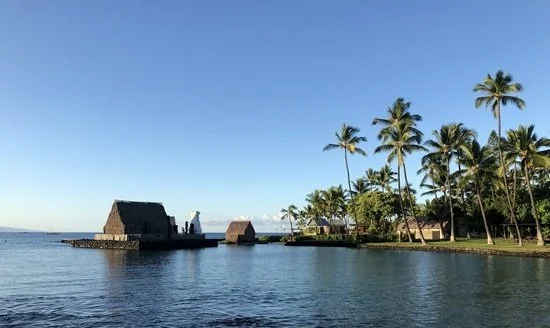IRONMAN Returns to Kona... But at What Cost to Equality?
The announcement that the IRONMAN World Championship is returning to Kona has re-ignited excitement across the triathlon world, and understandably so. Kona is the spiritual home of long-course racing. It’s iconic, it’s challenging and it’s where history has been made time and again. But amid the buzz it’s crucial to ask a more difficult question: What does this mean for female athletes?
While many are celebrating the return to Hawaii, IRONMAN’s decision to go back to proportional representation for World Championship slots (meaning slots are allocated based on the number of male and female participants globally) is being seen by many as a step backwards for gender equality in the sport.
Let’s be clear, this is more than just a scheduling change. It signals that equality in triathlon, particularly in IRONMAN branded events, remains conditional. And for younger athletes - many of whom have grown up with a sense of gender equity baked into their sporting environments - this feels tone-deaf.
A Regressive Move?
Other sports around the world are moving forward. When opportunities for women increase - be it through funding, media visibility, or equal access to championship events - female participation grows. We've seen this clearly in sports like women's soccer and NCAA basketball, where rising opportunities have led to increased performance levels, viewership and engagement. IRONMAN on the other hand, appears to be going in the opposite direction. After years of lobbying, the 2023 season marked a watershed moment: the first-ever standalone Women’s World Championship in Kona. It sold out. It was a celebration of female performance and participation. It was a moment that should have laid the foundation for future growth, but instead, we’re now watching that progress quietly be swept aside under the guise of ‘fairness’ or ‘logistics’.
The Flawed Logic of Proportional Representation
IRONMAN argues that the number of slots for each gender should reflect global participation rates. But let’s not forget that this very model existed for over two decades without increasing women’s participation. If it didn’t work then, why return to it now? This move is particularly jarring for athletes from countries like the United States, where Title IX Legislation has mandated gender equality in sports for over 50 years. Young female triathletes raised on a culture of equal opportunity are now being asked to accept fewer chances to qualify for the biggest race of the year - simply because fewer women currently participate. It’s circular logic: fewer opportunities lead to fewer participants, and the cycle continues.
Long-Term Vision vs Short-Term Thinking
Yes, we all wanted Kona back. No one's denying that. But returning to a single-day format without maintaining equal slot allocations is short-sighted. True progress takes time. NCAA women's basketball didn’t become a ratings juggernaut overnight - it took decades of investment, belief and opportunity.
Triathlon needs the same commitment. IRONMAN’s reliance on the fact that more men pay entry fees may make business sense today, but it undermines long-term growth. Female athletes deserve the same chance to aspire to Kona. And male athletes? Frankly, they’ll have to work harder to qualify if equal slots return - and that’s not a bad thing. A world championship should be hard to get into. It should be the ‘best of the best’, not just the best-funded or best-timed for a roll-down slot.
A Race Worthy of the Title ‘World Championship’
Beyond gender equity, there are practical questions about race-day logistics. If IRONMAN plans to host up to 3,000 athletes in a single-day format again, how will they preserve the integrity of the competition?
If the field is predominantly male, female age groupers and pros could once again find their races compromised by overcrowded bike courses, drafting packs, or slower competitors impacting their pacing and tactics. IRONMAN have yet to address how they’ll handle wave starts, course congestion, or TV coverage to ensure female athletes receive the same platform and race quality as their male counterparts.
We’ve already seen the benefits of separate race days: female professionals had clean races, clear media coverage and the spotlight they deserve. Merging the fields again risks undoing that progress.
The Bottom Line
Kona is back - and that’s worth celebrating. But if IRONMAN truly wants to future-proof the sport, it needs to invest in equality. That means more than just photo ops and marketing taglines. It means giving women equal slots, fair race conditions and the chance to dream of Kona just like their male counterparts.
Anything less sends the message that women’s participation is an afterthought. And in 2025, that simply isn’t good enough.
Bevan McKinnon / May 2025


